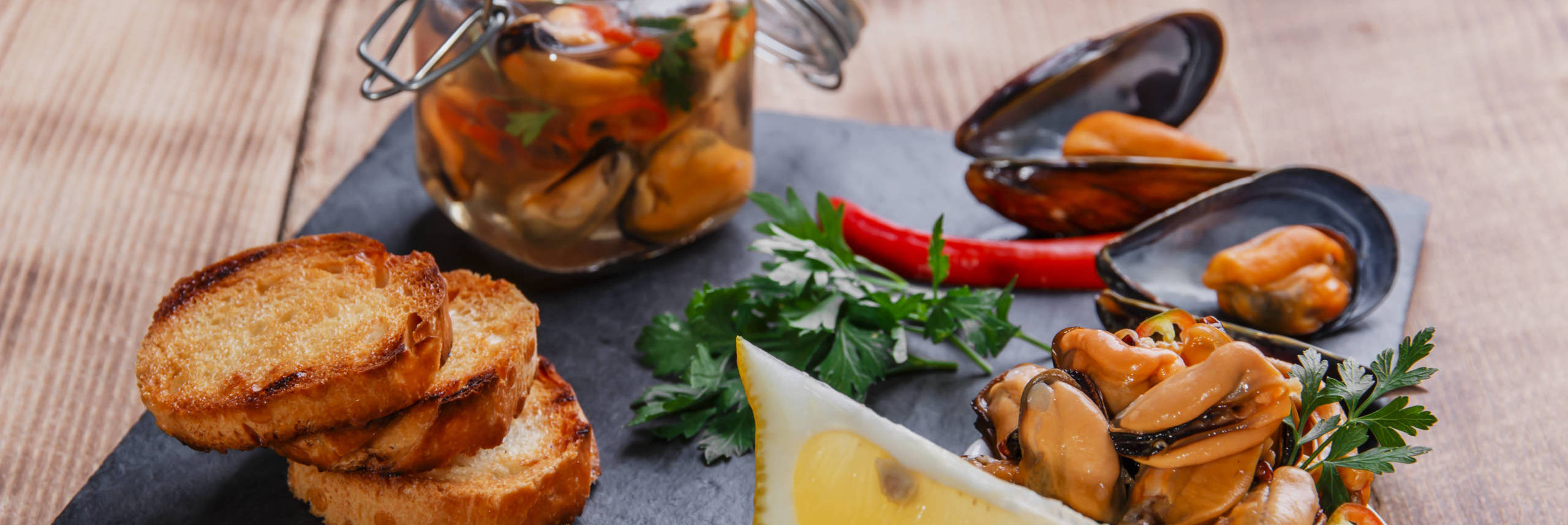14 August 2020
Tasty Marais poitevin!
Entrenched in a land of plenty, the Marais poitevin is a place to feast your eyes, but not only… Just wait until you see the array of local specialities: mojettes (haricot beans from the market gardens), lumas (snails cooked in sauce), Marans chicken, crayfish, eels and Charron mussels can be found side-by-side on the market stalls and in the shops. Angelica is a plant packed with the flavour of the wet marsh. This speciality from Niort is consumed in the form of a fluted, hollow stick, in jams and jellies, and in fruit jellies and liqueurs. The Marais poitevin also produces some excellent local beers.
Here’s a selection of key products:
Mojette, the white gold of the Marais
The mogette, mojette or mojhette is the haricot bean that for many years helped the Marais poitevin to flourish. The fertile soils of the wet marsh and the periods of high water levels allow the beans to be harvested twice a year. Traditionally, part of the local harvest is consumed fresh and the rest is threshed to separate the stalks from the beans, which are then left to dry on stakes known as “tourettes”.
The beans can be enjoyed with a leg of lamb or Vendée ham or, during the village fêtes, as “routi”, spread on buttered toast.
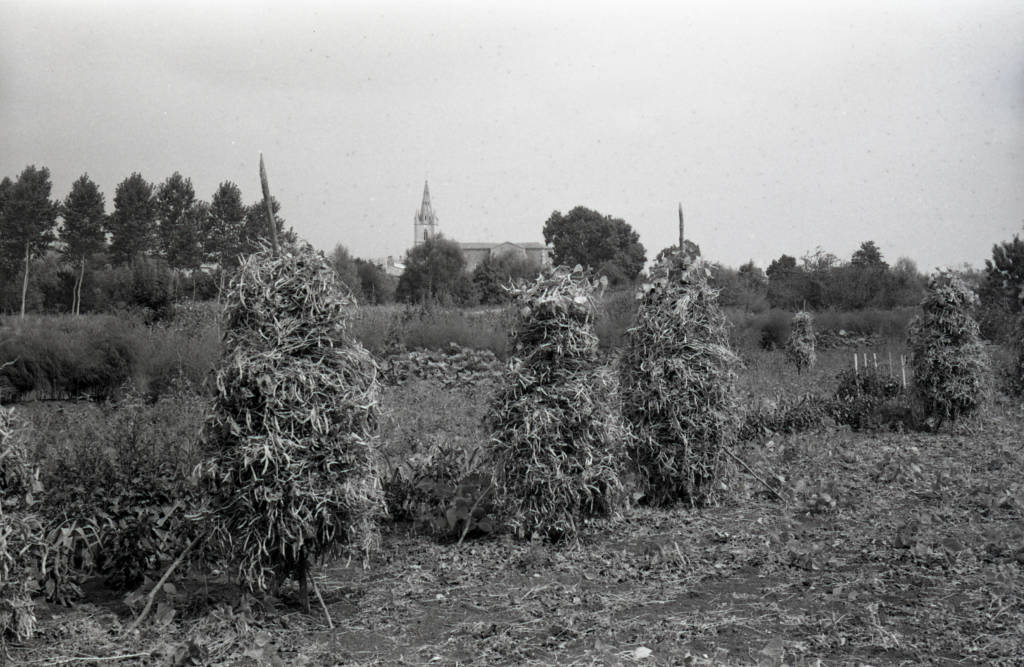
Mojettes drying on stakes in the Marais poitevin
The first haricot beans were brought over from South America by Spanish sailors, and the Marais poitevin was quickly recognised as the ideal place to grow this delicious dried pulse.
Mojettes can be found on the markets of the Marais poitevin from June to October.
“Bouchot” tidewater mussels
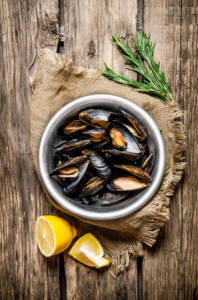
Bowl of mussels
As the mussel farmers of Aiguillon Bay like to say, “When the wheat is ripe, the mussels are ready”. Legend has it that an Irish traveller, Patrick Walton, invented the “bouchot” (mussel stake) back in the 12th century! He settled here after his ship went down in Aiguillon Bay just north of La Rochelle, and spent his time catching birds to survive. It is said that he caught them in nets stretched between stakes planted in the seabed. The stakes soon became covered in mussels that quickly grew fat and fleshy. The Irishman then added more stakes and placed grids between them. He called these barriers “bout” (fence) and “chot” (wood), hence the name “bouchot” given to tidewater mussels.
The local mussel is the “Charron”, a designation granted only to mussels that meet a strict set of requirements and come from the mussel farming centres of Marsilly, Esnandes, Charron and Aiguillon-sur-Mer.
Another technique is to grow mussels on ropes stretched out in the open sea. In this case the mussels grow faster because they are constantly under water.
To find out more about mussel farming, a visit to the Marais poitevin’s Maison de la Baie in Esnandes (Charente-Maritime) is a must. There you’ll find an amusing presentation of this well-known mollusc and the mussel farming profession.
Angelica
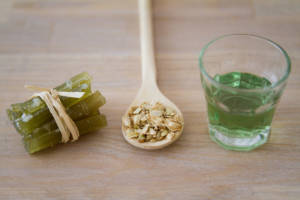
Angelica: candied, seeds and liqueur
Its full name is angelica archangelica and it is the world’s tallest herb known to date. It is attributed with multiple medicinal properties and other, almost magical benefits… Also known as angel’s herb, it is said to have been used to treat the plague but also to induce miscarriage, hence its reputation as a “maker of angels”. Those days are fortunately behind us.
From the same family as aniseed and parsley, angelica from Green Venice has been a very popular herb since the 12th century. First introduced by the monks who were in charge of building the marsh canals, angelica is harvested in summer. Whether wild or cultivated, it can grow up to two metres tall. Resistant to disease and thriving in wetlands, it has adapted extremely well to the Marais poitevin.
This herb has a subtle fragrance reminiscent of spearmint, with hints of gentian and wormwood. Nowadays, angelica from the marshes comes in many different forms and is widely showcased and promoted. It adds a delicious aroma to cakes and pastries but is also consumed as candied angelica, in liqueurs and syrups, and even in herbal teas. Here are a few recipe suggestions that will make your mouth water!!
The essential oil is a reputed tonic and stress reliever, and is also used in cosmetics to make soaps and shampoos, and in medicines for its many soothing properties. One of its main distinguishing characteristics is that every part of the plant – leaves, roots and seeds – is edible and each is used in one field or another.
We have wine and beer too!
To wash down these local specialities, the Marais poitevin also has its own beverages. In particular, it produces some excellent local beers. To name but a few, you’ll find: Cibulle in Maillé, Tête de Mule in Coulon, and Rieuse in Nuaillé-d’Aunis. All three are regular award winners at beer festivals and trade fairs!
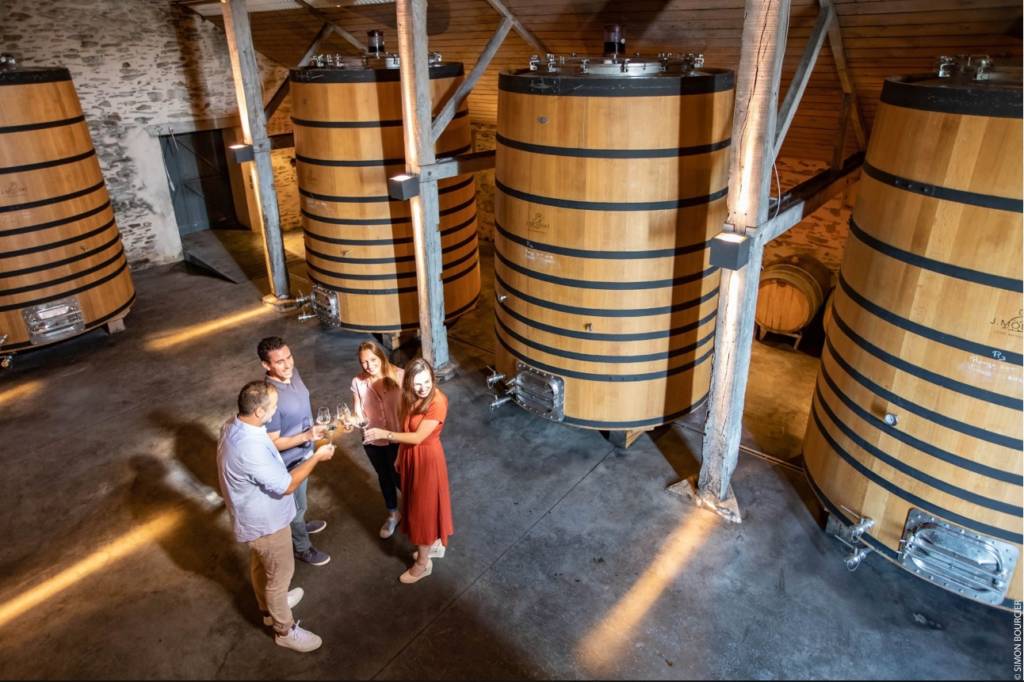
Vignoble des Fiefs Vendéens
But the region also has some very nice wines, like those of the Fiefs Vendéens AOC which was created in 2011. The combination of a mild climate and the geological wealth of the Marais poitevin gives Fiefs Vendéens wines a typicality that reflects the appellation’s different terroirs, one of which is Mareuil, well-known for red and rosé wines that are full of character. This Fief also produces white wines with subtle mineral notes. Then there’s the limestone terroir of the former island of Vix which produces powerful, generous red wines, and whites with subtle aromas that are tense and precise.
In short, as you’ve guessed, the Marais poitevin has an abundance of places to visit and a host of culinary delights waiting to be discovered in the numerous restaurants.
Check out the recipes based on local ingredients from the Marais poitevin and proposed by the Arte TV channel.

